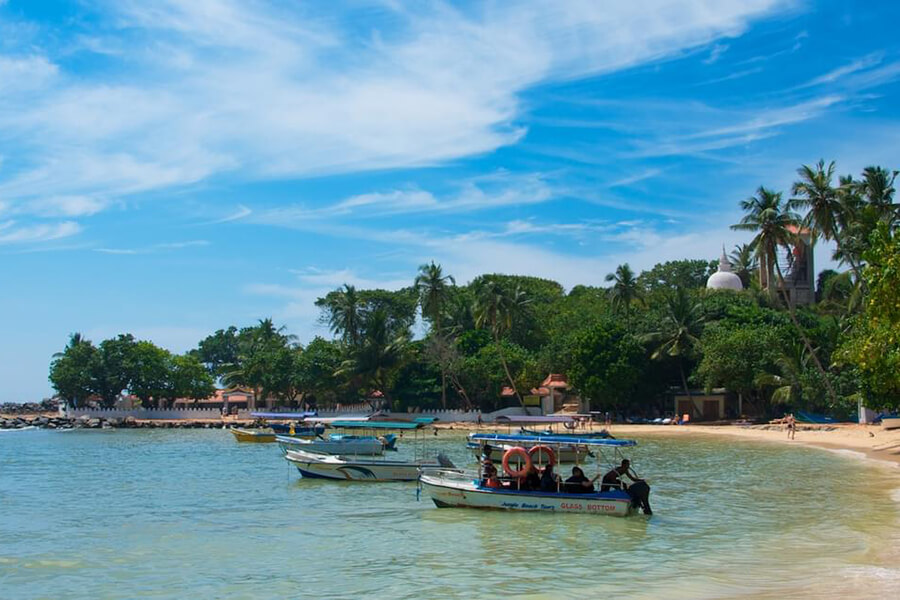Introduction to Dambulla Dambulla, located in the heart of Sri Lanka’s Cultural Triangle, is a treasure trove of ancient history and natural beauty. Renowned for its impressive cave temples and vibrant local culture, Dambulla is a must-visit destination for those exploring Sri Lanka’s rich heritage. As a UNESCO World Heritage Site, the Dambulla Cave Temple complex offers an extraordinary glimpse into the island’s Buddhist traditions, with its remarkable collection of statues, frescoes, and historical artifacts.
Historical Significance Dambulla has been a significant site for religious and cultural activities since ancient times. The Dambulla Cave Temple complex dates back to the 1st century BC, when King Valagamba sought refuge in these caves during a period of political unrest. The caves were later transformed into a temple complex and have been a place of pilgrimage and worship ever since. The site is an essential part of Sri Lanka’s cultural and religious heritage, reflecting the island’s deep-rooted Buddhist traditions.
Key Attractions in Dambulla
Dambulla Cave Temple (Golden Temple)
- The Dambulla Cave Temple, also known as the Golden Temple, is the centerpiece of Dambulla’s cultural attractions. The complex consists of five main caves, each adorned with an array of Buddha statues, intricate frescoes, and religious artifacts. The largest cave, the Great Cave, features a striking collection of over 50 Buddha statues, while the second-largest cave, the Cave of the Divine King, showcases a beautiful mural of the Buddha surrounded by celestial beings. The cave temples are renowned for their well-preserved art and historical significance.
Golden Temple of Dambulla
- The Golden Temple is the entrance to the cave temple complex and is characterized by its distinctive golden Buddha statue. The statue, standing at 30 meters tall, is a modern addition that complements the ancient temples. The Golden Temple serves as a welcoming landmark for visitors and provides a striking contrast to the historic caves.
Sigiriya Rock Fortress
- While not located directly in Dambulla, the Sigiriya Rock Fortress is a nearby attraction that should not be missed. Just a short drive from Dambulla, Sigiriya is a UNESCO World Heritage Site famous for its dramatic rock formation, ancient frescoes, and stunning views. The fortress is an essential part of Sri Lanka’s cultural triangle and offers a fascinating exploration of ancient architecture and history.
Rangiri Dambulla Perahera
- The Rangiri Dambulla Perahera is an annual festival held in honor of the sacred relics housed in the Dambulla Cave Temple. The festival features colorful processions, traditional dance performances, and the ceremonial display of the sacred relics. It is a vibrant celebration of Sri Lankan culture and provides visitors with an opportunity to experience local traditions and religious practices.
Dambulla Vegetable Market
- The Dambulla Vegetable Market is a bustling hub where visitors can experience the local culture and shop for fresh produce. The market offers a wide range of fruits, vegetables, and spices, showcasing the agricultural richness of the region. It’s a great place to explore Sri Lankan cuisine and interact with local vendors.
Popham’s Arboretum
- Popham’s Arboretum, located near Dambulla, is a botanical garden dedicated to the conservation of Sri Lanka’s diverse plant species. The arboretum features a collection of native and exotic trees, making it a serene spot for nature enthusiasts and those seeking a peaceful retreat from the city.
Cultural and Religious Significance Dambulla is a significant religious site, with its cave temples being among the best-preserved examples of ancient Buddhist art and architecture in Sri Lanka. The site reflects the island’s deep spiritual heritage and continues to be an important pilgrimage destination for Buddhists. The vibrant festivals and local traditions further enhance the cultural experience for visitors.
Exploring Dambulla Dambulla can be explored on foot or by tuk-tuk, with most attractions located within a short distance from each other. The cave temples require a bit of climbing to reach, but the effort is rewarded with stunning views and a profound sense of history. Guided tours are available and provide valuable insights into the significance of the various sites.
Accommodation and Dining Dambulla offers a range of accommodation options, from luxury hotels to budget guesthouses. Many hotels are located near the cave temple complex and provide easy access to the major attractions. The local dining scene features a variety of Sri Lankan dishes, including rice and curry, hoppers, and kottu roti. Visitors can enjoy traditional meals at local restaurants or sample street food at the vibrant markets.
Best Time to Visit The best time to visit Dambulla is during the dry season, from December to April, when the weather is pleasant and ideal for outdoor exploration. The cave temples and other attractions can be visited year-round, with each season offering a different experience.









